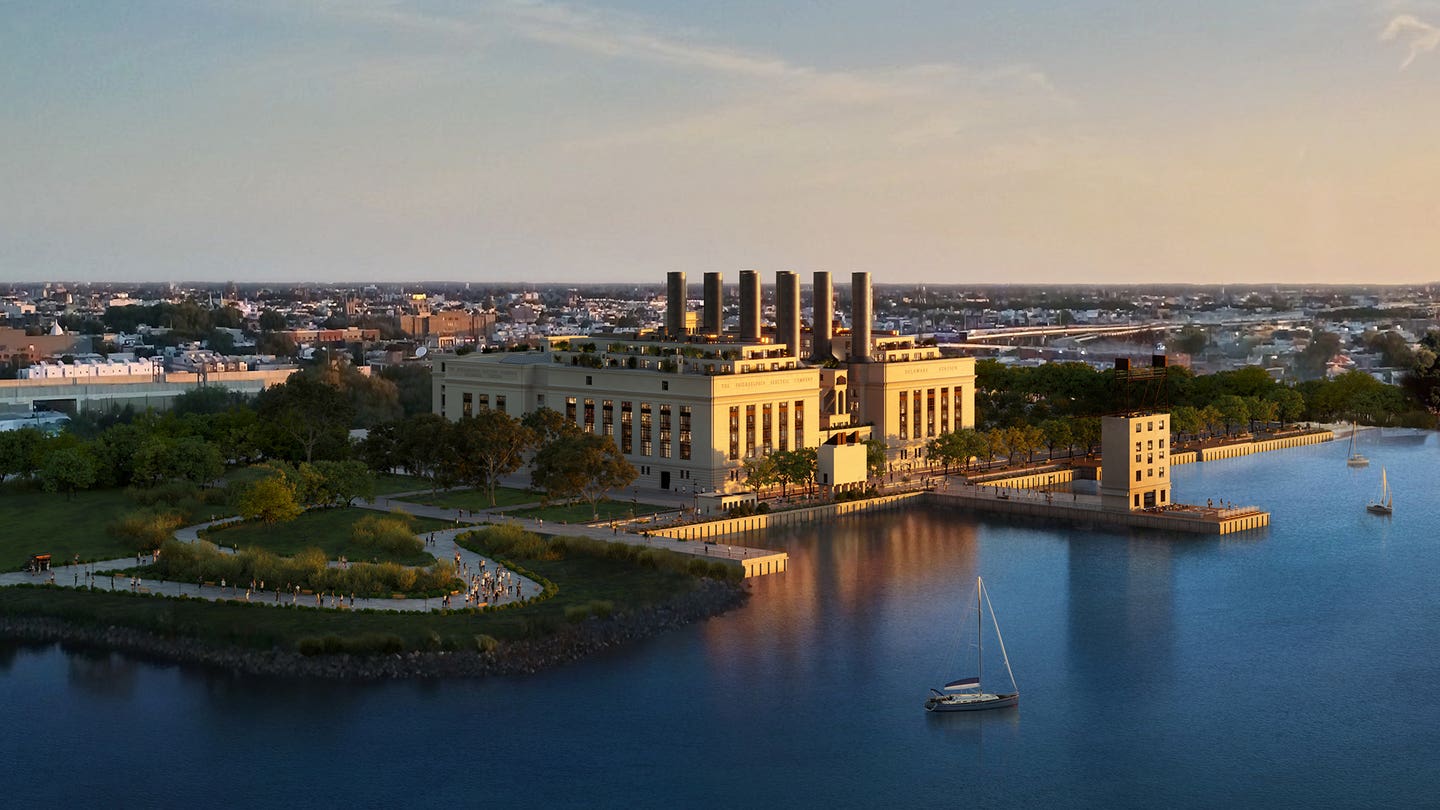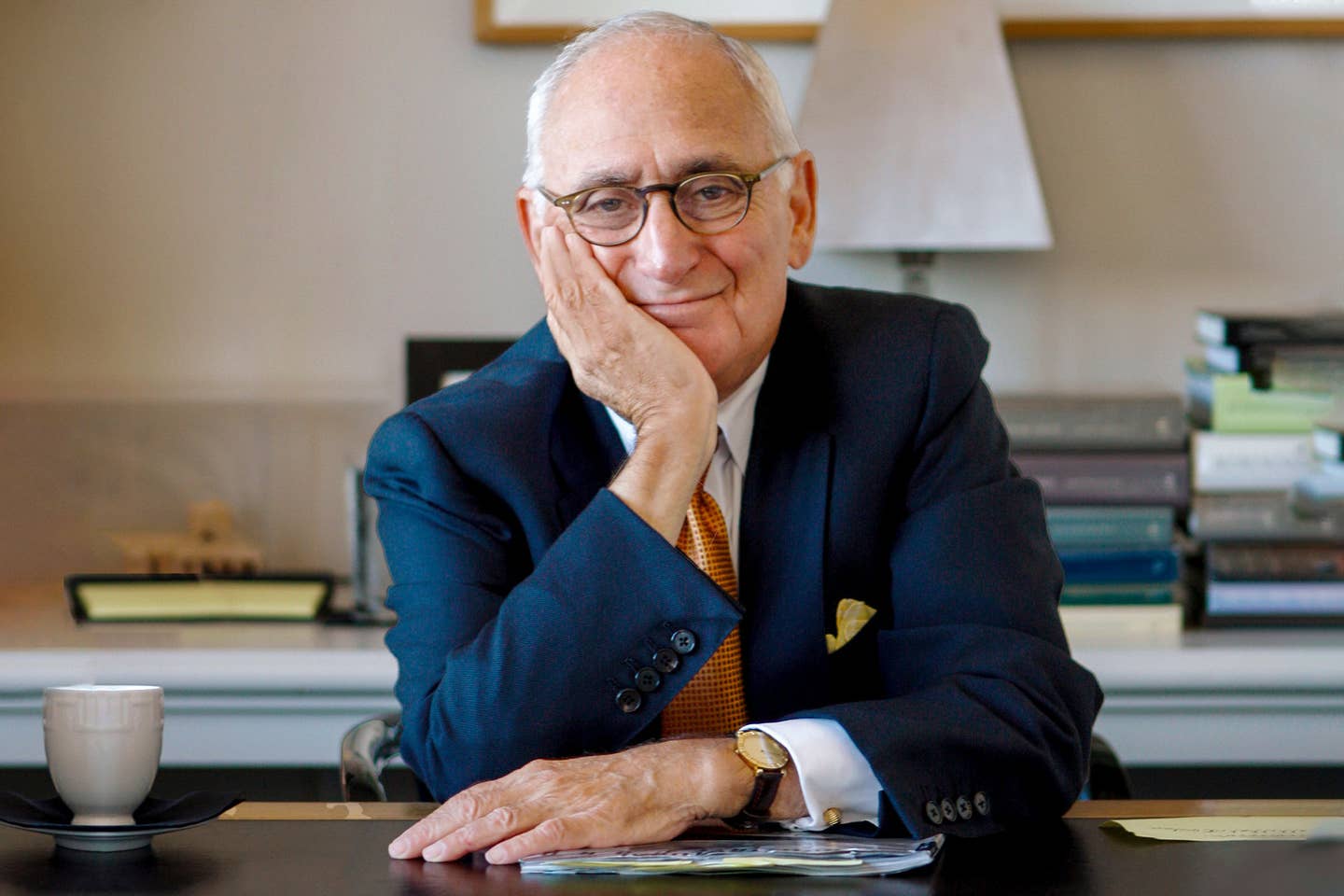
News
Architectural Critic David Brussat Comments on Penn Station’s Future: “Monumental Civility” and the Best of Old and New vs. the Former Governor’s Plan for Wanton Demolition and “Creative Anti-Urbanism”
Architectural critic David Brussat, editor of the “Architecture Here and There” blog, has published a detailed comparison of a rebuilt original Penn Station -- as proposed by the Empire Station Coalition, ReThinkPennStationNYC, Alexandros Washburn and many others -- and ex-Governor Cuomo’s proposed Empire State Complex, including analysis of the Draft Environmental Impact Statement.
Brussat’s article makes reference to and quotes recent opinion pieces by New York’s former Chief Urban Designer Alexandros Washburn, musician and author Josh Alan Friedman, and the series of Town Halls recently sponsored by the Empire Station Coalition (also see the presentation decks from this series, catalogued here).
He concludes his elegantly written analysis by stating we have a choice between “monumental civility” and “creative anti-urbanism.” The article is linked and set forth in its entirety below.
It coincided with an AMNY piece by Marc Hallum indicating that the 34th Street Business Improvement District lobby group (Dan Biederman), the New York Building Congress union, and the Hotel Trades Council union have written to Governor Hochul asking her to move ahead with her predecessor's proposals which are generally acknowledged publicly and privately by most to be an anti-urban disaster. The union support comes notwithstanding that alternate and demonstrably superior plans, such as those promoted by ReThinkPennStationNYC, would also entail substantial construction work.
Samuel Turvey, Chairperson of ReThinkNYC, commented:
It is telling that, in the same week in which David Brussat’s piece appeared, barely a handful of proponents have come forward to support the former Governor's plan, which is plainly horrific from a transit, architectural and urban design point of view. Except for some mercenaries and shills for the development interests, the overwhelming majority of people agree that this plan is a non-starter. It will set the city back decades, and would only appeal to those who think the current Port Authority Bus Terminal is a marvelous and functional piece of architecture. It is astonishing that people who know perfectly well what a refurbished Grand Central Terminal and Bryant Park have done to restore luster to New York’s built environment have embraced Mr. Cuomo’s subterranean rabbit warren with its apparently randomly placed points of ingress and egress. The proposed Empire Station Complex sets a new low as it will possess all of the architectural allure of a suburban shopping mall, although shopping malls at least, unlike Cuomo’s proposed station, are usually above ground. Why proponents think this will induce commuters to come back to the city post-Covid is bizarre. It will only confirm what many suspect, namely, that certain elements in the transit-industrial complex--including our infamously warring commuter railroads-- and a few well-placed lobbyists and activists refuse to get it. These forces think the commuting and traveling public, which uses Penn Station twice daily and depends on it for its livelihood, takes a back seat to the convenience of sports fans and concert-goers who attend events at Madison Square Garden once in a while.
Under our plan, there would be abundant jobs for workers in the construction, building trades and transit spheres – razing Madison Square Garden and rebuilding it elsewhere (Hudson Yards?), implementing the through-running of trains, and constructing an above-ground Penn Station. It would be work that takes our city to a new level of urban grandeur and transit efficiency while improving its economy and quality of life and positioning it for the second half of the 21st century.
Turvey continues:
Adding insult to injury, the Cuomo plan would require the destruction of half the neighborhood to build and fund it -- displacing residents, small businesses and demolishing historic landmarks. The goal they share with the Empire State Development Corporation is to erect anonymous, interchangeable commercial office towers from river to river, whether they are needed or not. Their plans need to be checked lest New York become “Dubai-on-the-Hudson.”
We agree with David Brussat and others that their ill-conceived, cliché-ridden, anti-urban plan would rend the rich fabric of the city, replacing its unique texture with glass-and-steel monoliths that could have sprouted up anywhere. For the sake of the city's identity, economy, meaning and quality of life, these plans need to be stopped.
In conclusion, Turvey stated:
We do not want Manhattan to become an office park where once-great train stations are replaced by soulless facilities that process people like baggage because a handful of myopic real estate developers believe this to be in the interest of their shareholders. As she did in the LaGuardia AirTrain debacle, the Governor should send this one back to the drawing board on behalf of the citizens of New York and the metropolitan region. It was drafted to satisfy egos, bullies and warring commuter railroads. It is rife with conflicts of interest.
We must not squander what may prove to be the best opportunity the city and region will have for a hundred years to improve its quality of life and economic viability. The tin horns who shill for the Empire Station Complex are leading us down a primrose path. In fact, our plan will do far more for the city, state and regional economy than theirs through the conversion of the transit hub into a through-running station (see recent BondBuyer piece by Paul Burton featuring the comments of the former president of the New York City Transit Andy Byford, on the positive impact of through-running in London) as part of the implementation of a regional unified transit network, capped by a great above ground station. In contrast, the former Governor’s proposal fails to meet even the lowest common denominator of good architecture and urban planning. This is not the way to address the calamitous transit, urban design and aesthetic quagmire of the current Penn Station.
David Brussat”s article appears below:
Two Visions of New York City
By DAVID BRUSSAT
Architecture Here & There
OCT 13, 2021
Two recent panels held by the Empire Station Coalition discussed rebuilding Penn Station in its original 1910 design and growing opposition to former Gov. Andrew Cuomo’s Empire Station Complex, which would clog the area around Penn Station with glass-box skyscrapers. The vicinity has already been declared a “blighted area,” placing 50 existing buildings at risk, including a dozen or so that are of historic importance. This plan must be stopped before the plan to rebuild Penn can make any sense.
A pair of essays, one in Crain’s New York by Alexandros Washburn, a former chief urban designer for New York City, and another in the New York Daily News by Josh Alan Friedman, author of Tales of Times Square, offer compelling cases for rebuilding the original Penn Station and against building “Houston on the Hudson,” as Friedman calls the Cuomo plan.
Imagine the difference between arriving in New York after Penn Station is rebuilt and arriving after the Empire Station Complex has been completed.
It is the difference that historian Vincent Scully evoked with his famous line after Penn Station was torn down in 1963: “One entered the city like a god; now one scuttles in like a rat.” The vast difference between the original Penn Station and the station we have today mimics the difference between Penn Station rebuilt versus getting stuck with the Empire Station Complex.
Of course, it would be literally possible to rebuild Penn Station and then surround it with glass towers. But that would be ridiculous.
***
The Penn Station that was demolished in 1963 was not quite the Penn Station that opened in 1910. As its owner went broke in the 1950s, Penn Central Railroad stinted on maintenance and installed “improvements,” especially an incongruous ticketing kiosk that detracted from the lines of the original. That is the station as recalled today by most who remember experiencing it as youths. The station as rebuilt anew would resemble the monument in its more salubrious form, before its grim and gritty final stages of faded glory.
Even in those final years, the sun’s rays still played with shadows on the fluted columns and carved embellishments of marble and granite inside and outside the station. Still, the aesthetic disjunct caused by layers of remodeling may explain why New York did not rise up in anger after the demolition was announced. Or maybe it was the difference between the power of social dissent then – burdened by the limits of a largely satisfied and obedient society – and now.
This post proposes that public opinion has much more influence today, and that forces aligning to block the Empire Station Complex and rebuild the old Penn Station can succeed where weak efforts to save the old Penn Station failed.
Imagine, for a moment, that Penn Station has now been rebuilt. The practicality of the task as a matter of engineering defies the image most of us have of its impossibility. Almost the entire structure of the original station remains intact beneath existing retail and waiting/ticketing levels above the original tracks and platforms, including the load-bearing piers that uphold those levels and Madison Square Garden above. Original blueprints survive for the passages, chambers, utilities and other features in, out, and around Penn Station. With advanced computerized stonecutting equipment and digital techniques of ornamentation to cut and mold cast stone, there is no need to import thousands of stoneworkers from Italy. Washburn recently wrote in Crain’s that,
“[t]o begin with, the station was not destroyed – it was decapitated. Gone are the soaring waiting rooms and the rows of columns, but all the guts remain. The entire foundation, every column supporting every piece of Penn Station is still there, as is the configuration of tracks. Most of the hard work of building the station is done. In many ways, you could argue that the easiest thing to do is to rebuild the station because you could do it without altering or affecting operations.”
Imagine rising from track level to the vastness of a waiting room large enough to contain Grand Central Terminal in its entirety. Light floods through arched windows as you marvel at the monumental scale, and at embellishments near and far. You exit the station through a portal whose grandeur prepares you for ornate buildings, new and old, around the station, including those built or restored after the Empire Station Complex was killed.
The old standbys at risk have been rescued, including the Hotel Pennsylvania (also by McKim Mead & White), the Stewart Hotel, the Fairmont buildings, the Equitable Life Assurance Building, the Penn Station Powerhouse, the Gimbels Building with its beloved skybridge, and the churches of St. John the Baptist, St. Francis, and St. Michael’s. Preservation mooted the eviction of congregants and tenants, commercial and residential. Completing the classical ménage, but not at risk, is the old Farley Post Office next door to Penn Station, now the Moynihan Train Hall, by McKim Mead & White as well, featuring a colonnade as exalted as that of the original Penn Station.
Add to this the prospect of new buildings in traditional styles – chief among them a Madison Square Garden relocated, possibly, to nearby Herald Square and redesigned to reflect the second Madison Square Garden designed by Stanford White of MM&W that once overlooked Madison Square Park. Also imagine the host of parks, parklets and squares recently proposed to grace the station area by architect Richard Cameron, who years ago brought the idea of rebuilding the original Penn Station into public view.
All of this creates a sense of place undisrupted by the helter-skelter of styles erected higgledy-piggledy since World War II, which discombobulated the more gentle stylistic diversity of New York streetscapes long past.
Imagine strolling from the station through streets that pick up on the historical character of Manhattan in the decades before its glory faded. Unlike the sterile glass towers proposed by Cuomo, Penn Station and its surroundings, preserved and proposed, partake of an architectural language that neurobiological research has traced to human survival techniques going back hundreds of thousands of years. Science now explains why traditional building patterns are preferred by two-thirds to three-quarters of the public in the most recent survey by Harris a year ago over the currently favored establishment architectural language.
Imagine that. Architecture beloved by the public. What an idea!
***
In the Oct. 28 panel, Lynn Ellsworth of HumanScaleNYC described the currently dominant architectural language as a cage into which most design and planning officials and professionals have locked themselves. That is why – even in a nation where markets run by supply and demand are supposed to rule – the architects, the developers, the planning officials and all others involved in building cities never listen to the public. Instead, in New York, the nation’s leading city of commerce, a topsy-turvy dedication to “generic dead space,” as Friedman puts it, undergirds Cuomo’s Empire Station Complex: ten huge new glass skyscrapers between Hudson Yards and the Empire State Building, with at least one of them taller than the Empire State Building.
The official project description provided by the Empire State Development Corporation‘s environmental impact statement contains no attempt to describe the appearance of the proposed “transit-oriented commercial district.” It is as if the appearance of buildings has no impact on our civic environment. Only the square leasable footage envisioned by developer Vornado Realty Trust matters. Only the list of proposed building heights offers any feel for the eventual result. The heights, as listed, would range from the tallest at 1,300 feet on downward to 1,270, 1,130, 1,052, 1,018, 975, 936, 748, 664 and 235 feet. (The Empire State Building rises 1,250 feet.) The massing of buildings on the EIS maps is speculative, though perhaps not more so than the heights themselves.
With negligible warning from the project description, projecting the likely look of these behemoths nevertheless requires little more than your impression of the city’s two latest large development projects: Ground Zero and Hudson Yards. No doubt the dominant style of skyscrapers in the Empire Station Complex would follow these patterns, because the same firms that designed the glass canyons at both locations will be asked to submit requests for proposals that fit the latest architectural clichés. If anything, perhaps we may expect the ten towers to be dumbed down from the more abstract chaos of the two supposed exemplars.
As if to confirm this prediction, the EIS assessment of adverse impacts on neighborhood character concludes that “[t]he Proposed Project would not result in a significant adverse impact on neighborhood character,” adding:
The buildings are anticipated to have contemporary designs, with curtain wall façades of glass, metal, or masonry, which would be consistent with the urban design character of a number of the taller, more recently constructed buildings in the primary study area, such as 1 Penn Plaza and 2 Penn Plaza.
Which tells us precisely nothing. With so little to go on, considering that no building project has yet to receive an architectural treatment at this stage of pre-development, it is hard to imagine the urban design details along the streets surrounding Penn Station. Still, some aspects are predictable.
The ten buildings would be clustered up close around the north, south and east edges of Penn Station, reaching up in height to as much as eight times the height of the station (and arena) itself. The ten buildings would completely block the station and its environs from the sun at almost all day and almost all year. To walk out of Penn Station would force New Yorkers and visitors to confront a phalanx of towers antiseptic in aspect, producing dark shadows or reflective glare depending on the sun’s location in the sky. I could not find a wind study in the EIS, but clearly the building heights and the sheer, featureless architecture of the ten towers would cause a wind-tunnel buffeting of passersby.
***
Whether Penn Station is rebuilt in the original style or remodeled to apply lipstick to the infamous pig, the impact of the Empire Station Complex may be summed up as almost entirely negative. Only the developer, Vornado, would benefit from any of this. Proponents of Empire Station insist that the project would transform “substandard, insanitary” patterns of existing development into “cohesive, revitalized, modern” patterns to be inflicted upon the city without the say of its citizens. In either case, proponents often define these terms to mean the opposite of how normal people understand them. In other words, expect historic character, even at the nadir of its decline, to be replaced by a uniform sterility. The entire proposal is anti-urban in its essence.
Josh Alan Friedman sums this all up with frightening clarity in his piece for the New York Daily News:
In defense of the streets [around Penn Station], I say these grand structures deserve rehabilitation, not annihilation. The demolition of Penn Station is now acknowledged as New York’s greatest architectural crime. Bulldozing the remaining blocks around it would reopen the wound. …
I pray the entire Empire Station Complex is stopped cold. Private groups like ReThinkNYC and New Yorkers for a Human-Scale City have floated cheaper and better alternatives. Scrap the subsidies to Vornado, scrap the $16 billion in sketchy financing, dependent on the sale of air rights. Rebuild Penn Station as the center of a regional unified train network. Hopefully, one that would resemble the picturesque hub of a railroad, not a shopping mall. It is up to Albany to spare the city the insult of another hyper-developed, gentrified forest of glass towers.
Maybe, without our knowing it, the Empire Station Complex is already dead. How great would that be! If not, then perhaps with a new governor, and with more popular understanding of what the old governor has proposed as his parting gift for New York City, it ought not be too difficult to imagine the public rising up to replace a very bad plan with a very good plan.
The Empire Station Coalition is comprised of: 29th Street Association, City Club of NY, CNU NYC, Environmental Simulation Center, Historic Districts Council, Human-Scale NYC, RethinkNYC, Limited Equity and Affordability at Penn South (LEAPS), Midtown South Community Council, Penn-Area Residents Committee, TakeBackNYC, and the Victorian Society New York.









